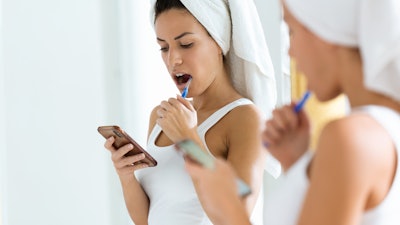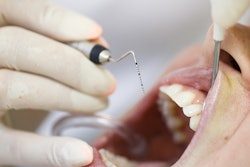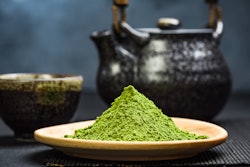
Personalized instructional videos plus using antigingivitis toothpaste and an interdental brush may improve gum health better than using that same toothpaste and following standard oral hygiene advice. The study was published in the Journal of Dentistry.
Videos with tailored oral hygiene advice (OHA) enhance adherence to oral hygiene (OH) practices and offer visual cues and the option of replaying the advice, which may lead to better comprehension and reinforcement, the authors wrote.
"This study demonstrates the benefit of changing OH behaviour and delivering OHA using an individually tailored approach with contemporary methodology," wrote the authors, led by Dr. Derele Buck of the University of Bristol Dental School in the U.K. (J Dent, July 15, 2024).
The study included 57 adults who were not undergoing orthodontic treatment, had at least 18 scorable teeth with an average plaque score of ≥2.0 (using the Turesky Plaque Index [TPI]), more than 10% bleeding on probing [BOP], and no periodontal pockets of ≥4mm.
Participants were randomized to an intervention or control group. The intervention group received personalized OHA recorded on their smartphone, highlighting specific areas needing attention and including tailored instructions for interdental brush (IDB) cleaning.
The control group received standard verbal OHA, including basic IDB cleaning instructions, from the same oral health educator. Both groups received interproximal brushes, a manual toothbrush, and antigingivitis toothpaste, according to the study.
After three months, participants returned for a follow-up visit, completed an oral health questionnaire again with additional questions for the intervention group about the video instructions, and were reassessed for plaque accumulation and gingival health.
Though both groups showed improved gingival health after three months, the intervention group showed significantly greater improvement (12.21% versus 6.8%, p <0.05).
In both groups, BOP scores improved from generalized (>30%) to localized (10% to 30%) gingivitis, suggesting that patients engaged in regular, effective plaque removal, sufficient to result in improved oral health. However, BOP was much more significant in the intervention participants likely indicating their much increased and effective use of interdental brushes and therefore supporting the use of customized OHA videos, the authors wrote.
While TPI scores decreased more in the intervention group compared to the control group, the difference was not statistically significant (1.15 vs. 0.92, p = 0.079), according to the results.
Furthermore, the most common comment (21.1%) was that using IDBs more frequently increased their motivation to stick to their brushing routine because participants noticed an improvement in their oral health since the baseline. At the end of the study, a similar proportion of participants in both groups reported increased motivation, according to the results.
Nevertheless, the authors warned that it is impossible to make direct comparisons between the results and those of other studies due to a lack of evidence on the efficacy of customized instructional oral hygiene videos. Otherwise, no other limitations were noted. In the future, further research should be conducted to demonstrate the effectiveness of OHA video technology intervention, the authors wrote.
"The greater reduction in plaque and BOP scores in the intervention group suggests the video OHA resulted in better plaque removal," Buck and colleagues concluded.




















